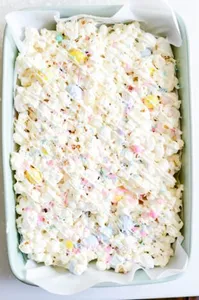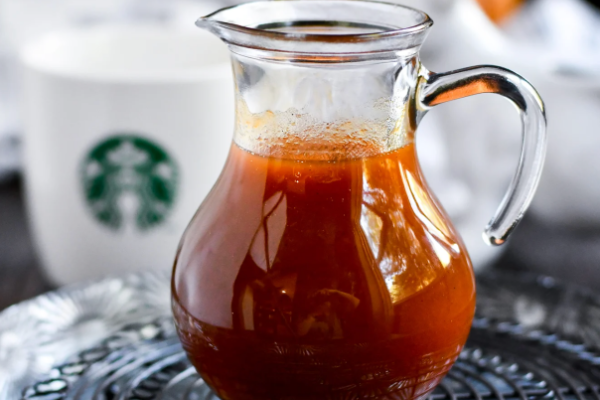How to Dye Easter Eggs with Food Coloring in the Instant Pot
Dyeing Easter eggs with food coloring in an Instant Pot can be a fun and efficient (aka: mess-free!) way to achieve festive and beautiful colored eggs. Here’s our simple guide to dyeing eggs in an Instant Pot.

Learn how to dye Easter eggs using food coloring in the Instant Pot for a quick and easy way to create beautifully colored eggs.
Ingredients & Supplies for Egg Dyeing using the Instant Pot
- Water: Water is essential for creating steam in the Instant Pot, which cooks the eggs. It also serves as a medium for diluting the dye solution to ensure even coloring of the eggs.
- Vinegar: Vinegar is added to the dye mixture to help the color adhere better to the eggshells, resulting in more vibrant and long-lasting colors. It increases the acidity of the dye solution, which facilitates the dyeing process by allowing the pigments to bond with the eggshell more effectively.
- Food Coloring: Food coloring provides the pigments needed to dye the eggs.
- Instant Pot: The Instant Pot is used to cook the eggs quickly and efficiently by steaming them under pressure. It provides a controlled environment for dyeing eggs, ensuring even cooking and vibrant colors.
- Ice Bath: An ice bath is essential for rapidly cooling down the eggs after they’ve been cooked and dyed. Placing the hot eggs into the ice bath stops the cooking process and helps set the colors, preventing them from fading or running. It also makes the eggs easier to handle.
- Cardboard Egg Carton: After dyeing and cooling the eggs, an egg carton provides a convenient and stable surface for drying them. Placing the eggs in an egg carton allows any excess dye or moisture to drain away, preventing smudging or sticking. It also helps keep the eggs organized and prevents them from rolling around (or being grabbed by curious hands) while drying.
- White Eggs: White eggs are often preferred for dyeing because they provide a neutral base that allows the colors to appear more vibrant and true to their intended shade. The white surface of the eggshell acts as a blank canvas for the dye, allowing the colors to pop and creating visually appealing Easter eggs.

Discover a fun and hassle-free method for dyeing Easter eggs with food coloring in the Instant Pot.
The Benefit of Using an Instant Pot for Easter Egg Dyeing
Comparing Instant Pot Dyeing vs. Traditional Methods for Easter Eggs
Traditional dyeing methods used to decorate Easter eggs typically involve boiling water with food coloring and vinegar in bowls or cups. Eggs are then submerged in the dye mixture for several minutes, sometimes needing to be rotated or flipped to ensure even coloring. This process can be messy and time-consuming, especially if you have multiple colors you want to use.
Now, enter the Instant Pot. This handy kitchen appliance isn’t just for making quick meals – it can also be used to dye eggs in a fraction of the time. Simply add water and food coloring to jars, place your uncooked eggs inside the jars and then inside the Instant Pot liner, seal the lid, and set it to high pressure for just a few minutes. Voila! Vibrantly colored eggs without all the hassle.

Get step-by-step instructions on how to use your Instant Pot to dye Easter eggs with vibrant colors using food coloring.
Tips & Tricks for Successful Egg Dyeing
Egg dyeing with food coloring in the instant pot is a fun and easy way to create beautifully colored eggs for Easter or any other occasion. Here are some tips and tricks for successful egg dyeing in the instant pot:
1. Start with room temperature eggs: It’s best to use eggs that are at room temperature when dyeing them in the instant pot. This will help prevent cracking and ensure even coloring.
2. Use white vinegar: Adding a splash of white vinegar to your dye mixture will help the color adhere better to the eggs, resulting in more vibrant hues.
3. Add enough water: Make sure there is enough water in the jars to fully submerge the eggs during the dyeing process. This will ensure that all sides of the eggs get evenly coated with color.
4. Use gel food coloring: For more intense colors, consider using food coloring gel instead of liquid food coloring drops. These concentrated forms of food coloring will produce richer, more saturated hues on your eggs.
6. Release pressure slowly: After cooking your dyed eggs in the instant pot, be sure to release pressure slowly to prevent any cracking or bursting of the shells.
7. Let cool before handling: Allow your dyed eggs to cool completely before handling them, as they may be hot right out of the instant pot.

Try out this innovative technique for dyeing Easter eggs using food coloring in the Instant Pot – perfect for busy families looking for a time-saving solution.
Your Easter Eggs Dyeing Questions Answered
Do you need vinegar to dye eggs?
Vinegar helps to set the dye on the eggs, making the colors more vibrant and long-lasting. It also helps to create a chemical reaction with the eggshell, allowing the color to adhere better and evenly across the surface of the egg.
Without vinegar, your dyed eggs may end up looking dull or patchy as the dye won’t properly adhere to the shell. Additionally, vinegar helps to create a more vibrant color result compared to using water alone.
Should Easter Eggs be Cold when Coloring?
When it comes to coloring Easter eggs, many people debate whether the eggs should be cold or at room temperature.
On the one hand, cold eggs tend to absorb color more evenly and vibrantly than warm eggs. The colder temperature helps the dye adhere better to the eggshell, resulting in a more vivid and consistent color.
However, some argue that room temperature eggs are easier to handle and may result in smoother, more uniform colors. Room temperature eggs also tend to dry faster after being dyed.
Ultimately, whether you choose to use cold or room temperature eggs for coloring is a matter of personal preference. Experiment with both methods and see which one works best for you.

Get creative this Easter season by dyeing eggs in the Instant Pot – it’s simple, fun, and produces stunning results.
Can you dye brown Easter eggs?
Yes, you can dye brown Easter eggs, but there are some differences compared to dyeing white eggs.
When you dye brown eggs, the resulting colors may not be as vibrant or bright as they would be on white eggs due to the natural color of the eggshell. However, you can still achieve lovely and unique colors by using darker or more intense dye solutions.
Here are a few tips for dyeing brown Easter eggs:
- Choose Intense Colors: Opt for darker or more concentrated dye solutions to ensure the colors show up well on the brown eggshells. You may need to let the eggs soak in the dye for a longer period to achieve the desired color intensity.
- Pre-treatment: Some people recommend lightly sanding the surface of brown eggs before dyeing to help the dye adhere better. You can also try soaking the eggs in a vinegar-water solution for a few minutes before dyeing to slightly lighten the eggshell’s surface and enhance dye absorption.
- Embrace Natural Tones: Since brown eggs have a natural earthy tone, consider embracing this characteristic when dyeing them. You can use lighter pastel colors or earthy tones to complement the brown eggshells and create a rustic or organic look.

Say goodbye to messy dye kits and hello to convenience with these tips on using the Instant Pot for flawless Easter egg coloring.
More Easter Recipes
- 1
- 2

Instant Pot Dyed Easter Eggs
Our minds are blown by these Instant Pot Dyed Easter Eggs! Did you know you can cook AND dye Easter eggs in the Instant Pot? So easy and no mess to worry about!
Ingredients
- 1-2 cups of water
- 2 tablespoons of vinegar per jar
- 15 drops of food coloring per jar
- 9-12 eggs (varies by jar capacity)
Instructions
- Add 1 cup of water to the bottom of the Instant Pot.
- Pour 2 tablespoons of vinegar in each jar.
- Add 10-15 drops of food coloring to each jar.
- Place 2-3 eggs in each jar (depends on how large the jars are), and add water to each jar, enough to cover the eggs.
- Set the Instant Pot for 7 minutes on manual, high pressure.
- Let the steam release (natural or quick– see post for details).
- Use tongs or oven mitts to transfer the jars from the Instant Pot to the sink. Let cold water run through each jar long enough to cool the eggs so that you can handle them.
- Transfer the eggs to an ice bath until completely cool.
- Let dry completely before handling.






























